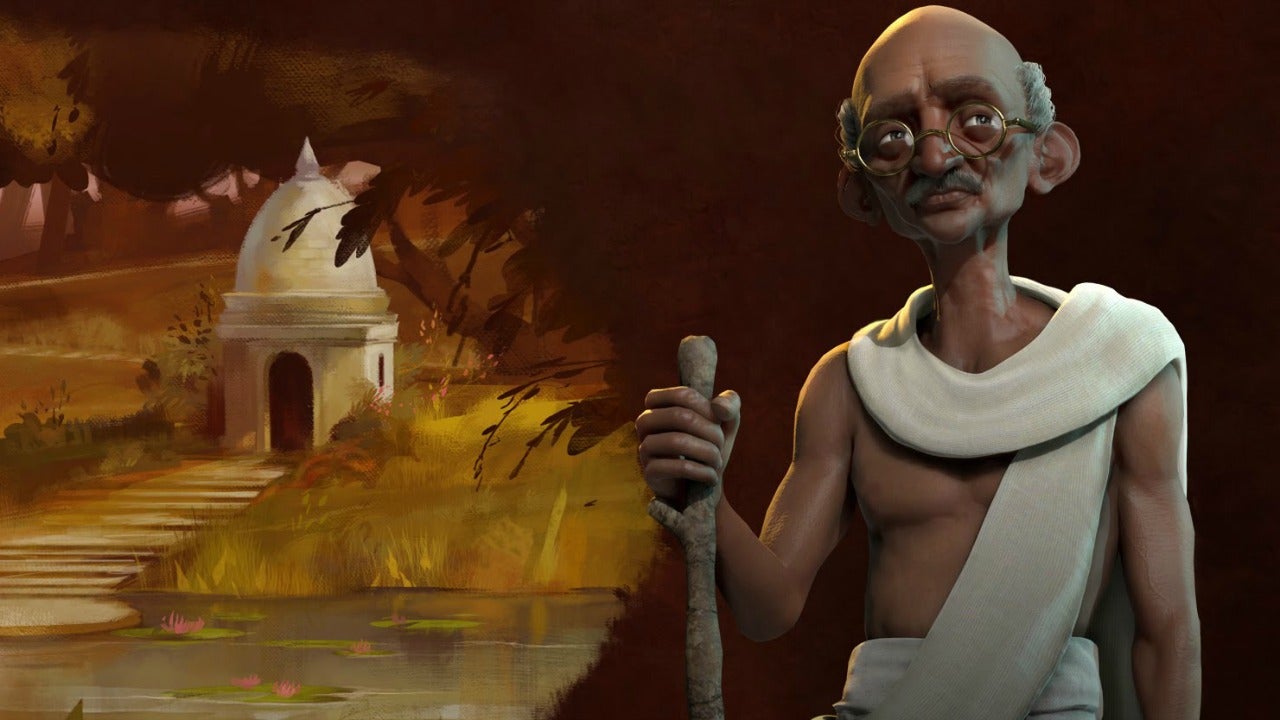While guiding a civilization from the cradle of life in 4000 BC through to reaching for the stars in 2050 AD can seem a little overwhelming, and while this new entry works hard to make things accessible, clear and as concise as it’s possible to be when depicting over 6,000 years of human endeavour and progress, distilling the essence of the key strategies that are immediately important to understand versus those that can be put on hold for several hundred in-game years isn’t always easy - and that’s where our Civilization 6 guide comes in. So, whether you’re wondering how best to press home the unique advantages of your chosen leader, understand the new district system, earn some fast cash or simply find out just what all those Xs in 4X actually mean (eXplore, eXpand, eXploit, eXterminate), then read on. A quick note: we’ve refreshed out Civ 6 guides for the game’s launch on Nintendo Switch, but just be aware that they contain information regarding the Rise and Fall DLC as well as the base game, which means some things only apply if you have that DLC! Otherwise… crack on!
Civilization 6 strategies - How to master the early game, mid-game and late game phases Civilization 6 Leader list - Master each Agenda, Trait, Agenda and Unique Unit Civilization 6 Districts - Best tile placement and how to get adjacency bonuses Civilization 6 Governments and Policies list - requirements, bonuses, and more
Victories
Civilization 6 Culture Victory explained - how to earn Foreign Tourists, Domestic Tourists, and Tourism in Civ 6 Civilization 6 Science Victory - how to win the Scientific Victory Space Race in Civ 6 Civilization 6 Religious Victory - how to gain Followers and convert cities Civilization 6 Domination Victory - war conditions and how to win the military victory
Resources
Civilization 6 Science explained - how to earn Science and how it works Civilization 6 Religion and Faith explained - how to earn Faith, found Pantheons Civilization 6 gold - the best ways to make money and spend it wisely
DLC and Rise and Fall expansion:
Civilization 6 Rise and Fall guide - expansion details and what’s new in Civ 6 Rise and Fall? Civilization 6 Loyalty and Governors explained - how to increase Loyalty and earn Governors in Civ 6 Civilization 6 Era Score - how to earn Era Points and Historic Moments, plus Golden Ages, Heroic Ages, Dark Ages and Dedications explained Civilization 6 new Civs - all new Civs in Rise and Fall and other Civ 6 DLC
Complete beginners will find a feature-rich game that may surprise them with the many hundreds of hours of play that it will offer across multiple campaigns. With every new Civilization game comes an exciting period of discovery as systems are learned, tech trees are pored over and connections between the many elements are unearthed. Take your time, this is a turn-based game after all, and savour the gradual uncovering of the many interconnected parts of Civilization 6. However, for the strongest and most successful start to your game right out of the gate, keep these handy beginner tips and tricks in mind. Once you’re done, check our more advanced Civilization 6 strategies for mastering the early, mid and late game.
City placement matters. While it can be tempting to move your first settler unit a little closer to any exciting-looking bonus resource icons that might be nearby, your primary concern for your starting city is access to fresh water. Settling near a river to provide fresh water, or by the coast if there’s no river available, will provide a tangible boost to the number of citizens that your city can support right from the off. This, in turn, lays a strong foundation for city growth and improvement. With your settler selected, pay attention to the overlay that pops up to highlight which tiles are best for water and which are water-shy dust bowls. While specific city placement becomes less constricted as you conduct research to improve access to fresh water, it’s worth remembering that housing and amenities remain crucial throughout the entire game. Giving your population somewhere to live keeps your cities growing and ensuring that everyone is happy by boosting access to amenities through luxury resources and entertainment buildings, and keeps everyone productive. Venture forth and explore. Build a scout, for the excellent movement bonuses they enjoy, and begin uncovering the map to discover what may be lurking out in the wilds. As well as establishing the lay of the land early on, which helps with longer term planning of empire expansion, it’s also crucial to know if you’re close by to any city-states, rival leaders or barbarians. If you see a stray barbarian wandering the wilderness, consider stalking him to find out if there’s a barbarian encampment nearby that can be dealt with by early military units long before it becomes a problem. Similarly, you might find tribal villages (or goody huts, as they’re affectionately termed by the Civ community), which provide a wealth of potential bonuses including… …Boosts to research. In Civilization 6 you can gain boosts to research undertaken on the technology tree. Sometimes these ‘Eureka moments’ are stumbled upon in goody huts uncovered through exploration but there are many more proactive ways that you can achieve them. The technology tree details what action needs to be taken to gain the boost, be it farming a local resource, founding a city on the coast or defeating a handful of barbarians, and each one meaningfully speeds up progress by reducing the time required to research a technology by half. Useful all the game through, understanding these boosts and actively working towards them can provide a major boon to your fledgling civilization in its earliest days. Builders are not just workers by another name! Don’t assume that the builders in Civilization 6 are simply renamed workers from previous games. Doing so makes an ass of u and me; it also hurts the builders’ feelings. The key difference is that while builders, like workers, are used to improve the tiles within your nation’s borders, they actually complete improvements instantly but come with a limited number of uses (three, by default). As such, don’t just set out to fill every hex tile around your cities with farms and mines, consider the land around you and how what you have to work with might be combined with what you want to achieve. Don’t be afraid to leave a builder idle for a few turns until that useful source of horses or shiny diamonds fall within your empire’s expanding borders.
Trading is not just all about the money (money, money). If you’ve followed the advice above and sent units out to explore the land around you (you look smart, so we’ll assume you have) it won’t be long before your scouting parties encounter another civilization, a city-state, or both. Combined with the early cultural research of Foreign Trade from the civic tree, you’ll be in a position to send a trader to your newly-discovered neighbour. This will not only improve relations between you, but also bring in tangible benefits such as additional food and gold for your city, as well as the odd bit of trader gossip that can help reveal a rival leader’s temperament towards you. What’s more, traders establish roads between your city and their destination as they traverse back and forth, smoothing the path figuratively and literally between your peoples. Consider stationing a basic military troop or two along the route that the trader travels to decrease the chance of them falling prey to wandering barbarians. Take time to explore the UI. It’s really quite pretty for one thing, but of more practical use is that it’s crammed full of helpful tools, useful guides and pertinent information to help get you off to a good start. Of particular use early on will be the mini-map and its associated options found in the bottom left hand corner of the screen. Here, you’ll be able to toggle resource and yield icons to help you decide where best to send builders and settlers, apply lenses to delineate land boundaries based on a host of options including political, geographical and religious territories, and plot map pins to enable you to add your own notes to a particular tile to come back to later.
Elsewhere, you can explore the tech and civic trees, view what trade routes you have active and be reminded of the city-states that you’ve met on your travels. While you shouldn’t be at all concerned about the world rankings menu so early on in the game (this is a marathon, not a sprint), it does contain some useful basic information on how to achieve each victory condition. Be aware, also, that hovering over almost any given item, menu, tile or unit in the game provides information via the handy tool-tip system, and that the Civilopedia is on hand (the question mark in the top right of the screen that denotes the in-game encyclopaedia) should you wish to further your understanding of any of the game concepts at any point. Armed with these beginner tips, you are now ready to move on to the next step of world domination, cultural empowerment, scientific wonder or religious enlightenment by heading through to an introduction to Districts, the best way to raise and use gold, the most effective way to use each leader, and more in-depth strategies for your early, mid and late game progress. Good luck!

